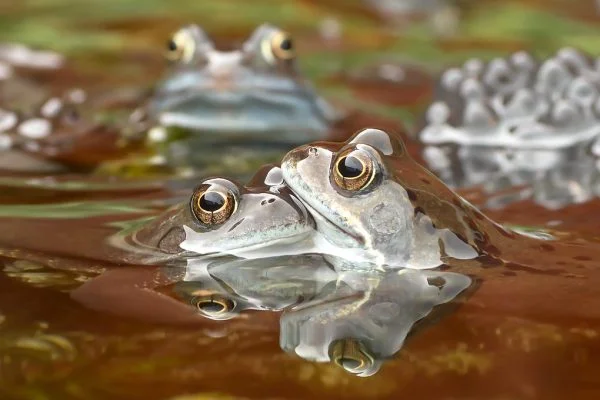Coyotes, with their haunting calls echoing through the night, hold a captivating presence in the natural world. These adaptable and intelligent creatures play a vital role in maintaining ecological balance, and their social lives are as fascinating as their solitary calls. Beyond their ecological significance lies a unique aspect of language – the diverse collective nouns used to describe them, offering a glimpse into their social dynamics and the complexities of their world.
Collective Nouns of Coyote
Unlike animals with singular collective nouns, coyotes boast a diverse vocabulary, each term reflecting the specific context and the group’s social structure:
- Pack: This widely used and familiar term signifies a close-knit family unit of coyotes, typically consisting of a breeding pair, their offspring, and occasionally additional individuals. It evokes a strong sense of cooperation, shared purpose, and the hierarchical structure established within these family groups.
Example: As the sun dipped below the horizon, casting long shadows across the plains, a pack of coyotes emerged from their den. The alpha pair led the way, followed by their playful pups, their unified movement highlighting the strong bonds within this family unit.
- Band: This term emphasizes a temporary or loosely organized group of coyotes, often formed for specific purposes like hunting or territorial defense. It evokes a sense of temporary collaboration, opportunistic behavior, and the flexibility of coyotes in adapting their social interactions.
Example: Driven by the scent of freshly caught prey, a band of coyotes converged from different directions. Their coordinated movements and vocalizations showcased their ability to collaborate effectively when presented with a shared opportunity.
- Rout: This term, less commonly used, signifies a large and disorderly group of coyotes, often associated with moments of chaos or disruption within their pack structure. It evokes a sense of disarray, potential conflict, and the dynamic nature of social hierarchies within coyote societies.
Example: The sudden appearance of a predator sent a rout of coyotes scattering in all directions. The frantic barking and panicked movements highlighted the potential for disruption and the complex social dynamics at play within coyote packs.
- Skulk: This term, also less common, signifies a small and secretive group of coyotes, often associated with cautious or stealthy behavior. It evokes a sense of hidden movement, cunning strategy, and the diverse tactics employed by coyotes in hunting and navigating their environment.
Example: Under the cover of darkness, a skulk of coyotes crept closer to the unsuspecting prey. Their silent movements and keen senses showcased their adeptness at using stealth and cunning to their advantage.
Interesting Facts About Coyotes
Understanding these collective nouns deepens our appreciation for the complexities of coyote social life and their ecological significance:
Masters of Adaptation: Coyotes are highly adaptable creatures, thriving in diverse habitats ranging from forests and mountains to grasslands and even urban areas. This adaptability allows them to play an essential role in maintaining ecological balance by controlling prey populations and contributing to seed dispersal.
Communicative Canines: Coyotes are highly vocal creatures, utilizing a complex system of howls, barks, and yelps to communicate with each other. This sophisticated communication system allows them to maintain social cohesion, coordinate hunting strategies, and express a range of emotions.
Facing Challenges: Despite their vital role in the ecosystem, coyotes face various challenges, including habitat loss, conflict with humans, and disease outbreaks. Raising awareness about their ecological importance and promoting responsible human-wildlife coexistence are crucial for ensuring their continued survival.
A Cultural Icon: Coyotes hold a significant place in various cultures, often depicted as symbols of adaptability, intelligence, and resilience. Understanding their significance and fostering respect for these remarkable creatures is essential for promoting harmonious co-existence within the natural world.
Final Thoughts
From the tightly knit “pack” hunting together to the opportunistic “band” seeking prey, the diverse collective nouns for coyotes offer a glimpse into their multifaceted lives and enduring presence in the wild. By appreciating these terms, understanding the intricacies of the coyote world, and addressing the challenges they face, we can ensure that the haunting song of these remarkable creatures continues to echo through the wilderness for generations to come.
Also Read:






